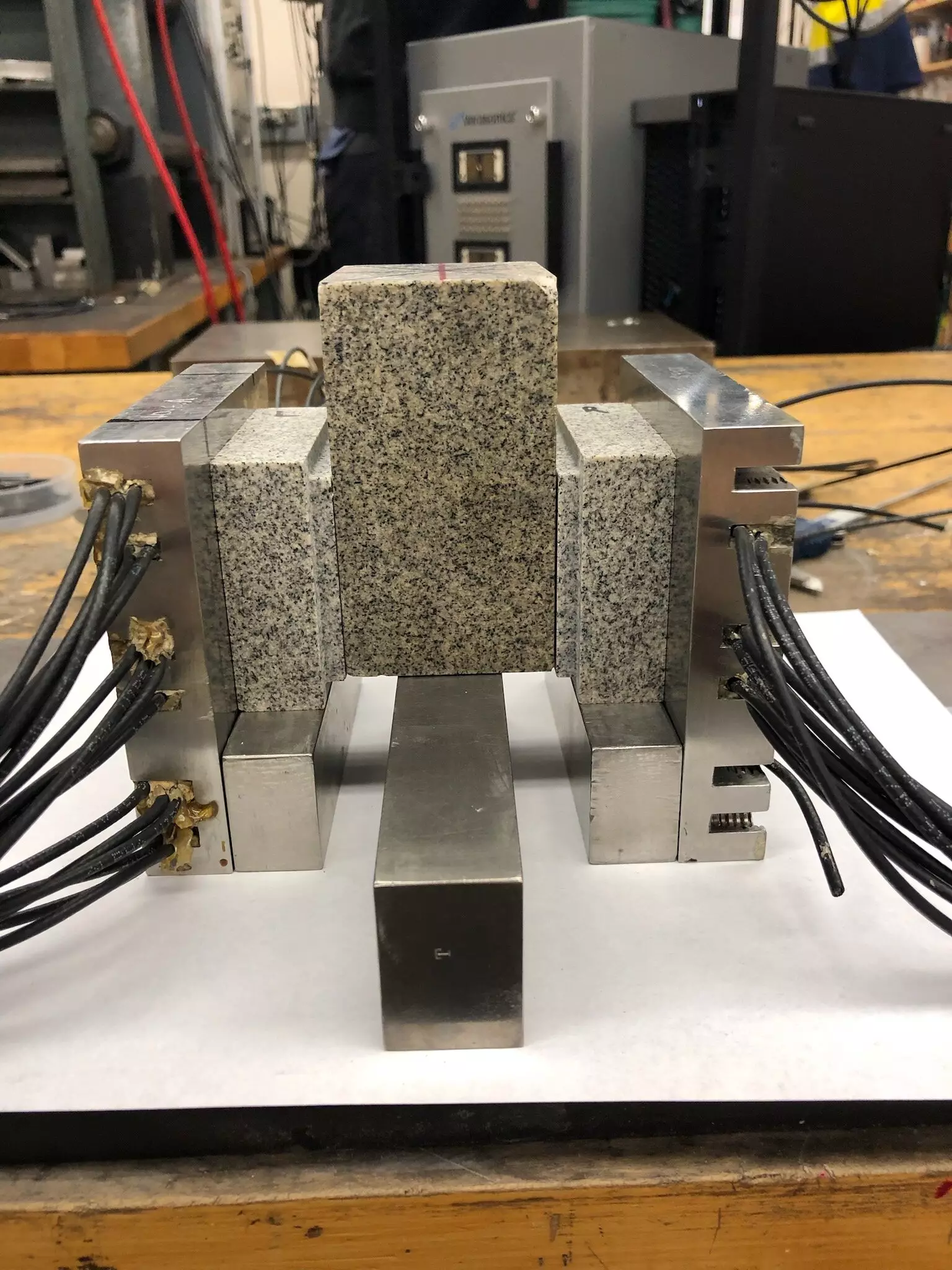Scientists at The University of Texas at Austin have made a breakthrough in earthquake prediction by successfully isolating a pattern of lab-made “foreshock” tremors. This discovery brings hope that future earthquakes could potentially be forecasted by studying the swarm of smaller tremors that precede them. The research, which has been published in the journal Nature Communications, marks an important step towards understanding the precursory phenomena associated with earthquakes.
Lead researcher Chas Bolton plans to replicate the results in the real world, beginning in Texas where he hopes to identify similar patterns in measurements made by the state’s seismological network, TexNet. The ability to predict or forecast earthquakes hinges upon the ability to accurately measure, characterize, and understand the events leading up to an earthquake. Bolton, a research associate at UT Austin’s Bureau of Economic Geology, aims to expand on his initial lab experiments by studying tremor sequences associated with earthquakes greater than magnitude 5 in Texas.
Earthquakes occur in irregular cycles, making it challenging to determine when and where the next one will strike. While seismic records demonstrate that tremors and other geological movements precede large earthquakes, separating random rumbles from meaningful foreshocks has proven difficult. Scientists have long sought clues that could help signal an impending earthquake. Bolton’s research involved creating miniature lab-made earthquakes and analyzing the seismic “noise” that preceded them. The experiments revealed a significant pattern of tremors that grew stronger and occurred closer together as the lab earthquake approached.
The identified pattern of tremors provides a physical explanation for what controls foreshocks. This insight is crucial in understanding the mechanisms behind earthquake activity and predicting future seismic events. The findings also provide researchers with a distinct pattern to watch for in the real world. However, detecting these patterns on faults that stretch hundreds of miles and penetrate deep into the Earth presents significant challenges. Co-author and UTIG Director, Demian Saffer, emphasizes the importance of equipping real-world faults with seismic monitors capable of detecting subtle changes in the Earth’s crust. These long-term observatories play a crucial role in monitoring seismic activity and understanding how faults behave in the lead-up to an earthquake.
Bolton’s ongoing research includes experimenting with a larger, 3-foot-long artificial fault at UTIG. This expanded lab fault will enhance the understanding of how the observed tremor pattern may manifest in nature. By conducting experiments on different fault sizes, researchers hope to gain valuable insights into the behavior and characteristics of foreshock tremors. Furthermore, these experiments complement Bolton’s TexNet research, which aims to analyze tremor sequences in Texas associated with earthquakes of magnitude 5 and above. The integration of laboratory experiments and real-world data analysis promises to advance earthquake prediction capabilities.
The ability to forecast earthquakes has always been a significant challenge due to the complex and irregular nature of earthquakes. However, the recent breakthrough made by researchers at The University of Texas at Austin provides hope in the form of identified foreshock tremor patterns. By successfully replicating these patterns in the real world and observing seismic changes leading up to earthquakes, scientists can enhance earthquake prediction capabilities. While there are still many hurdles to overcome, such as the difficulty in detecting patterns on massive fault lines, this research highlights the importance of investing in advanced seismic monitoring technology. The ongoing research by Chas Bolton and his team, along with the work being done through TexNet, represents a step forward in understanding earthquake precursors and improving our ability to forecast these potentially devastating natural disasters.


Leave a Reply